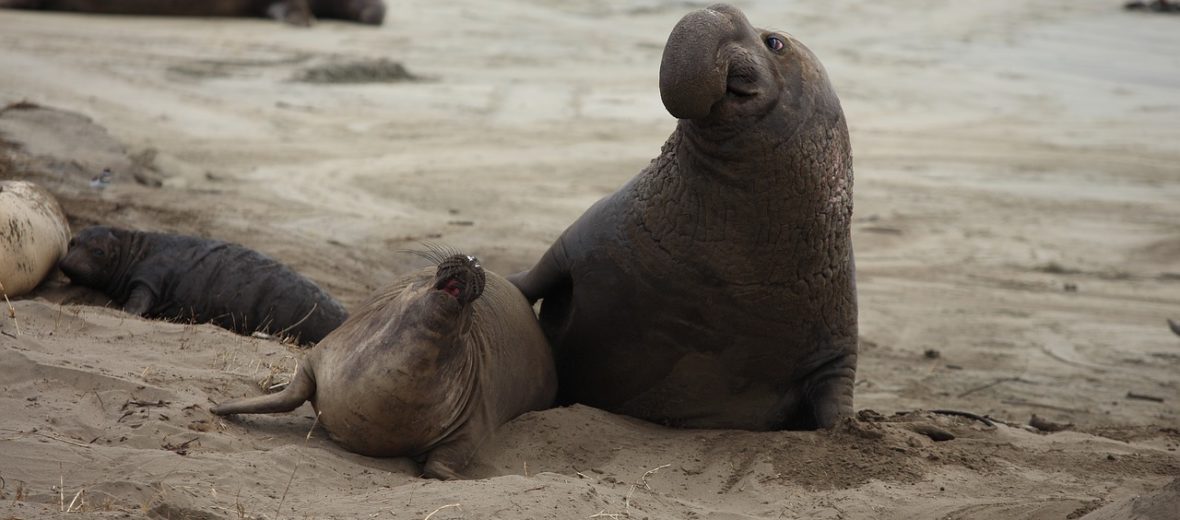
Whether it be the northern or the southern elephant seal, both are massive and equally impressive in their own rights. The northern elephant seal ranges from Alaska to Mexico. Whereas the southern ranges south of the Equator. Once thought to be extinct, a population of around 50 – 100 were found on and around the island of Guadalupe, off Mexico’s Baja California coastline. This last remaining population is responsible for the re-population of the now estimated 160,000 northern elephant seals. Now their numbers are stable (both northern and southern) and they are listed as Least Concern by the IUCN.
First the Stats…
Scientific name: Mirounga
Weight: Up to 8,800 lbs.
Length: Up to 20 feet
Lifespan: Up to 19 years
Now on to the Facts!
1.) Elephant seals are sexually dimorphic in that males and females are much different in size and only males get that famous snout. Males can outweigh females by 7 – 8 times!
2.) Orcas, great white sharks, and leopard seals all prey on elephant seals. Primarily the young are the easiest targets.
3.) These lumbering beasts are called elephant seals due to their immense size and the fact that they have that famous nose.
4.) Males inflate their trunk with air that is inhaled and then a loud roaring bellow is produced. The length and volume of this sound is a way for the dominant males to show just how strong they are.
5.) If the whole making noise thing from their proboscis doesn’t do the trick, males will engage in fierce and bloody battles to win control over the harem and gain the title of Beach Master.
But wait, there’s more on the elephant seal!
6.) Elephant seals primarily eat squid, with fish and crustaceans making up the remainder of their diet.
7.) Like the camel, these seals can avoid dehydration due to their kidneys having a unique ability to squeeze nearly every last drop of water from their urine, while on land. Thus passing only minerals and a sort of solid waste and conserving water.
Did you know…?
The elephant seal can dive to nearly 6,000 feet and hold their breath for up to 2 hours!
8.) Mom’s milk is about 12% fat. About 2 weeks after birth the fat content increases to over 50%, giving her milk a pudding-like look and feel. Domestic cow milk is only up to 3.5% fat, in comparison.
9.) Females give birth to a single pup after a delayed implantation of 3 months. So their actual pregnancy is only 9 months, the total pregnancy lasts 12.
10.) In just 1 month, pups increase their weight by 4 times; growing from 50 lbs. to 300 lbs.!
Now a Short Elephant Seal Video!
Also, check out the Critter Science YouTube channel. Videos added frequently!
Want to suggest a critter for me to write about? Let me know here.



